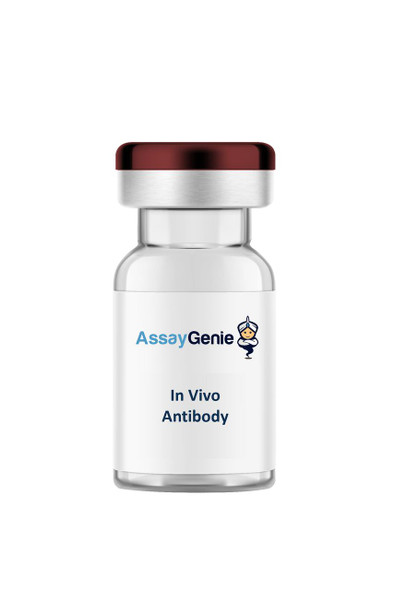Ccr5 Antibody (PACO25572)
- SKU:
- PACO25572
- Product Type:
- Antibody
- Reactivity:
- Mouse
- Host Species:
- Rabbit
- Isotype:
- IgG
- Applications:
- ELISA
- Antibody Type:
- Polyclonal Antibody
- Conjugation:
- Unconjugated
Description
Ccr5 Antibody (PACO25572)
The CCR5 Polyclonal Antibody (PACO25572) is an essential tool for researchers studying CCR5, a cell surface receptor involved in inflammation and immune response. This antibody, developed and tested for its specificity and reliability in various applications, is raised in rabbits and exhibits high reactivity with human samples.CCR5 is known for its role in regulating immune cell migration and function, particularly in the context of inflammatory responses and infectious diseases. The availability of a reliable antibody for detecting and studying CCR5 expression is indispensable for research in immunology, virology, and drug development.
With its ability to specifically target the CCR5 protein, this antibody facilitates the analysis of CCR5 expression patterns in different cell types and tissues. Researchers can use it for Western blotting, immunofluorescence, and other experimental techniques, providing valuable insights into the function and regulation of CCR5 in health and disease.Overall, the CCR5 Polyclonal Antibody (PACO25572) is a valuable tool for investigating the role of CCR5 in immune responses, inflammation, and infectious diseases, offering new avenues for therapeutic intervention and disease management.
| Antibody Name: | Ccr5 Antibody (PACO25572) |
| Antibody SKU: | PACO25572 |
| Size: | 50ug |
| Host Species: | Rabbit |
| Tested Applications: | ELISA |
| Recommended Dilutions: | |
| Species Reactivity: | Mouse |
| Immunogen: | Recombinant Mouse C-C chemokine receptor type 5 protein (263-354AA) |
| Form: | Liquid |
| Storage Buffer: | Preservative: 0.03% Proclin 300 Constituents: 50% Glycerol, 0.01M PBS, PH 7.4 |
| Purification Method: | >95%, Protein G purified |
| Clonality: | Polyclonal |
| Isotype: | IgG |
| Conjugate: | Non-conjugated |
| Background: | Receptor for a number of inflammatory CC-chemokines including MIP-1-alpha, MIP-1-β and RANTES and subsequently transduces a signal by increasing the intracellular calcium ion level. May play a role in the control of granulocytic lineage proliferation or differentiation (By similarity). |
| Synonyms: | C-C chemokine receptor type 5 (C-C CKR-5) (CC-CKR-5) (CCR-5) (MIP-1 α receptor) (CD antigen CD195), Ccr5, Cmkbr5 |
| UniProt Protein Function: | CCR5: a 7-transmembrane G-linked receptor for a number of inflammatory C-C type chemokines including MIP-1-alpha, MIP-1-beta and RANTES. Transduces a signal by increasing the intracellular calcium ion level. May play a role in the control of granulocytic lineage proliferation or differentiation. Acts as a coreceptor (along with CD4) for HIV-1 R5 isolates. Interacts with PRAF2. Interacts with HIV-1 surface protein gp120. Efficient ligand binding to CCL3/MIP-1alpha and CCR4/MIP-1beta requires sulfation, O-glycosylation and sialic acid modifications. Glycosylation on S6 is required for efficient binding of CCL4. Interacts with ADRBK1. Interacts with ARRB1 and ARRB2. Variations in CCR5 are associated with resistance or susceptibility to immunodeficiency virus type 1 (resistance or susceptibility to HIV-1). Variations in CCR5 gene also influence the rate of progression to AIDS after infection. R60S variant, a naturally occurring mutation in a conserved residue in the first intracellular domain of CCR5, results in reduced amounts of the protein in the membrane and consequently may be associated with reduced susceptibility to infection by microbes that depend on these molecules as their receptors. Variations in CCR5 are associated with susceptibility to West Nile virus (WNV) infection |
| UniProt Protein Details: | Protein type:Membrane protein, multi-pass; Receptor, cytokine; Motility/polarity/chemotaxis; GPCR, family 1; Membrane protein, integral; Receptor, GPCR Cellular Component: cell surface; membrane; cytoplasm; integral to membrane; plasma membrane; cytosol; endosome; external side of plasma membrane Molecular Function:G-protein coupled receptor activity; signal transducer activity; C-C chemokine receptor activity; chemokine receptor activity; C-C chemokine binding; actin binding; glycoprotein binding; protein kinase binding Biological Process: calcium-mediated signaling; positive regulation of interleukin-6 production; defense response; positive regulation of interleukin-1 beta secretion; negative regulation of axon extension; chemotaxis; release of sequestered calcium ion by sarcoplasmic reticulum into cytosol; positive regulation of tumor necrosis factor production; signal transduction; positive regulation of apoptosis by virus; G-protein coupled receptor protein signaling pathway; elevation of cytosolic calcium ion concentration; cell-cell signaling; calcium ion transport; positive regulation of fever; positive regulation of cell-cell adhesion; immune response; positive regulation of neuron differentiation; inflammatory response; negative regulation of cell migration; positive regulation of inflammatory response |
| UniProt Code: | P51682 |
| NCBI GenInfo Identifier: | 341940545 |
| NCBI Gene ID: | 12774 |
| NCBI Accession: | P51682.3 |
| UniProt Secondary Accession: | P51682,O35313, O35891, P97308, P97405, Q3ZAZ8, Q61867 |
| UniProt Related Accession: | P51682 |
| Molecular Weight: | 40,785 Da |
| NCBI Full Name: | C-C chemokine receptor type 5 |
| NCBI Synonym Full Names: | chemokine (C-C motif) receptor 5 |
| NCBI Official Symbol: | Ccr5 |
| NCBI Official Synonym Symbols: | AM4-7; CD195; Cmkbr5 |
| NCBI Protein Information: | C-C chemokine receptor type 5; CCR-5; CC-CKR-5; C-C CKR-5; MIP-1 alpha receptor; chemokine (C-C) receptor 5 |
| UniProt Protein Name: | C-C chemokine receptor type 5 |
| UniProt Synonym Protein Names: | MIP-1 alpha receptor; CD_antigen: CD195 |
| Protein Family: | C-C chemokine receptor |
| UniProt Gene Name: | Ccr5 |
| UniProt Entry Name: | CCR5_MOUSE |






